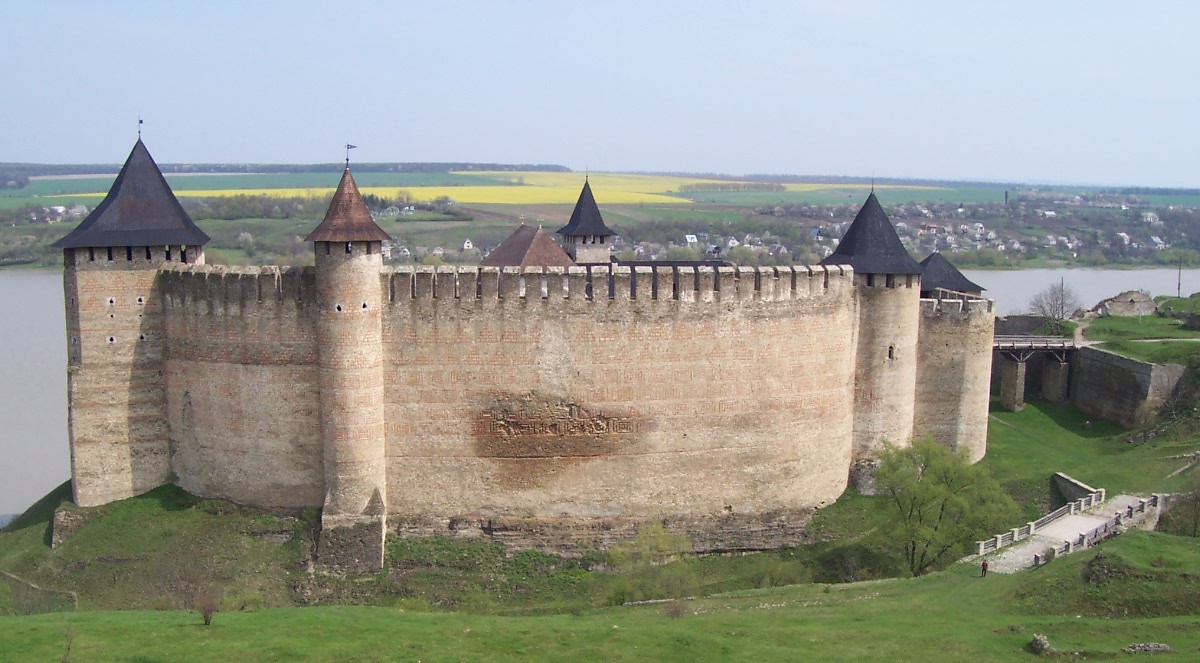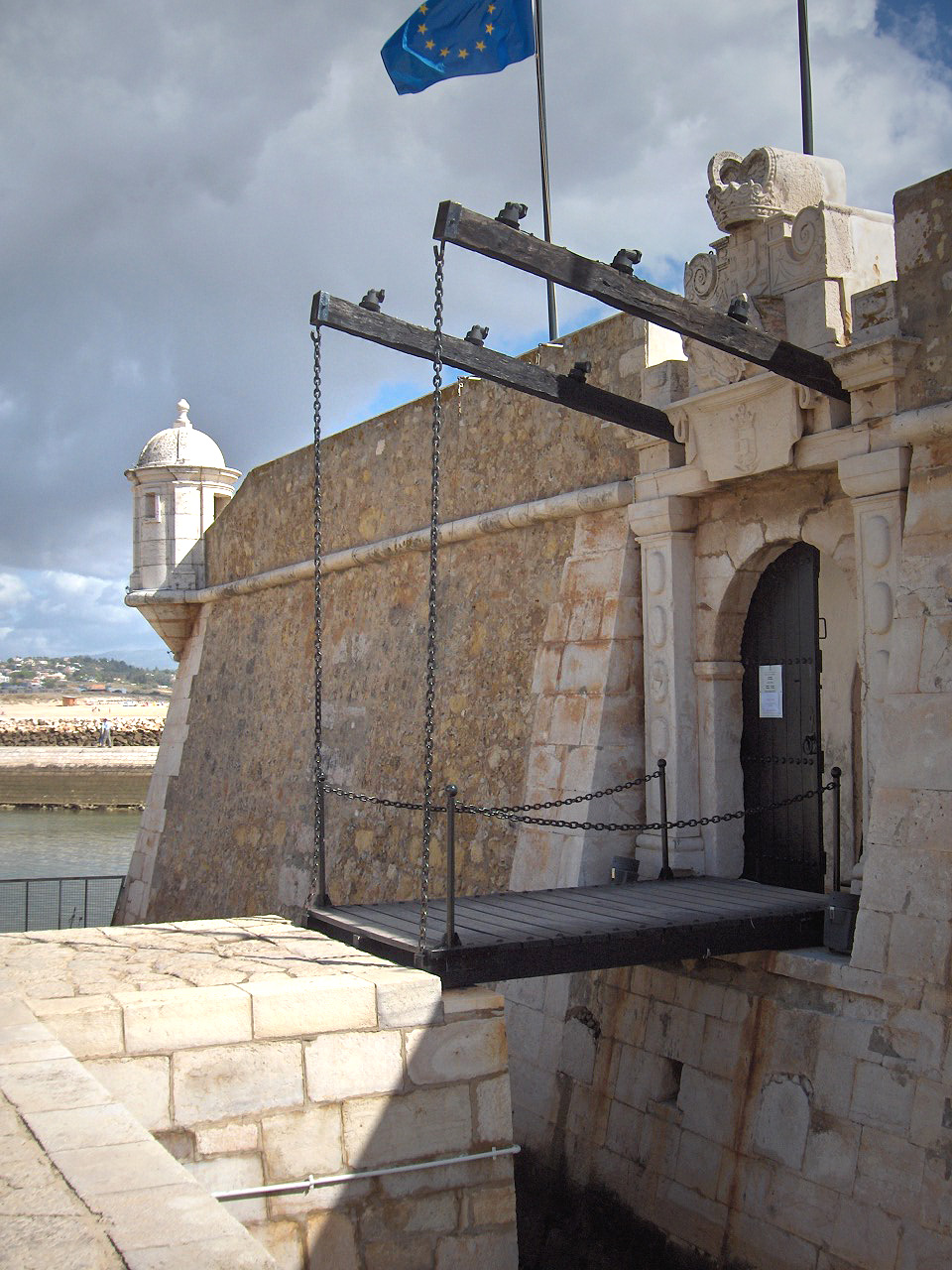|
Chamber Gate
A chamber gate (german: Kammertor) is a type of gateway system on medieval town fortifications and castles that comprises at least two successive gateways linked by an easily defended passageway between two walls. Chamber gates can be built in the space between two enceintes or built into an enceinte as an independent gateway. Because relatively few fortifications are surrounded by a complete second defensive wall, chamber gates are frequently found in short ''Zwinger'' sections. Chamber gates were often integrated into existing buildings and protected by the defensive levels above them, by defensive tower A fortified tower (also defensive tower or castle tower or, in context, just tower) is one of the defensive structures used in fortifications, such as castles, along with curtain walls. Castle towers can have a variety of different shapes and ful ...s or by portcullises and drawbridges. Literature * Friedrich-Wilhelm Krahe: ''Burgen des deutschen Mittelalters. Grundriss- ... [...More Info...] [...Related Items...] OR: [Wikipedia] [Google] [Baidu] |
Medieval
In the history of Europe, the Middle Ages or medieval period lasted approximately from the late 5th to the late 15th centuries, similar to the Post-classical, post-classical period of World history (field), global history. It began with the fall of the Western Roman Empire and transitioned into the Renaissance and the Age of Discovery. The Middle Ages is the middle period of the three traditional divisions of Western history: classical antiquity, the medieval period, and the modern history, modern period. The medieval period is itself subdivided into the Early Middle Ages, Early, High Middle Ages, High, and Late Middle Ages. Population decline, counterurbanisation, the collapse of centralized authority, invasions, and mass migrations of tribes, which had begun in late antiquity, continued into the Early Middle Ages. The large-scale movements of the Migration Period, including various Germanic peoples, formed new kingdoms in what remained of the Western Roman Empire. In the ... [...More Info...] [...Related Items...] OR: [Wikipedia] [Google] [Baidu] |
Castle
A castle is a type of fortified structure built during the Middle Ages predominantly by the nobility or royalty and by military orders. Scholars debate the scope of the word ''castle'', but usually consider it to be the private fortified residence of a lord or noble. This is distinct from a palace, which is not fortified; from a fortress, which was not always a residence for royalty or nobility; from a ''pleasance'' which was a walled-in residence for nobility, but not adequately fortified; and from a fortified settlement, which was a public defence – though there are many similarities among these types of construction. Use of the term has varied over time and has also been applied to structures such as hill forts and 19th-20th century homes built to resemble castles. Over the approximately 900 years when genuine castles were built, they took on a great many forms with many different features, although some, such as curtain walls, arrowslits, and portcullises, were ... [...More Info...] [...Related Items...] OR: [Wikipedia] [Google] [Baidu] |
Enceinte
Enceinte (from Latin incinctus: girdled, surrounded) is a French term that refers to the "main defensive enclosure of a fortification". For a castle, this is the main defensive line of wall towers and curtain walls enclosing the position. For a settlement, it would refer to the main town wall with its associated gatehouses, towers, and walls. According to the 1911 ''Encyclopædia Britannica'', the term was strictly applied to the continuous line of bastions and curtain walls forming "the body of the place", this last expression being often used as synonymous with ''enceinte''. However, the outworks or defensive wall close to the enceinte were not considered as forming part of it. In early 20th-century fortification, the enceinte was usually simply the ''innermost'' continuous line of fortifications. In architecture, generally, an enceinte is the close or precinct of a cathedral, abbey, castle, etc. This definition of the term differs from the more common use of enceinte as ... [...More Info...] [...Related Items...] OR: [Wikipedia] [Google] [Baidu] |
Zwinger
"" () is a German word for outer ward or bailey (castle), outer bailey. It represents an open kill zone area between two defensive walls that is used for defensive purposes. s were built in the Post-classical history, post-classical and early modern periods to improve the defence of castles and town walls. The term is usually left untranslated, but is sometimes rendered as "outer courtyard", presumably referring to the subsequent role of a as a castle's defences became redundant and it was converted into a palace or ''schloss''; however, this belies its original purpose as a form of killing ground for the defence. The word is linked with , "to force", perhaps because the forced an enemy to negotiate it before assaulting the main defensive line. Essenwein states that the "main purpose of this feature was so that the besieging force could not reach the actual castle wall very easily with battering rams or belfry (siege engine), belfries, but had to stop at the lower, outer wall; ... [...More Info...] [...Related Items...] OR: [Wikipedia] [Google] [Baidu] |
Defensive Tower
A fortified tower (also defensive tower or castle tower or, in context, just tower) is one of the defensive structures used in fortifications, such as castles, along with curtain wall (fortification), curtain walls. Castle towers can have a variety of different shapes and fulfil different functions. Shape of towers Rectangular towers Square or rectangular towers are easy to construct and give a good amount of usable internal space. Their disadvantage is that the corners are vulnerable to mining (military), mining. Despite this vulnerability, rectangular towers continued to be used, and Muslim military architecture generally favoured them.Kennedy (2000). Round towers Round towers, also called drum towers, are more resistant to siege technology such as sappers and projectiles than square towers. The round front is more resistant than the straight side of a square tower, just as a load-bearing arch. This principle was already understood in antiquity. Horseshoe-shaped towers The ... [...More Info...] [...Related Items...] OR: [Wikipedia] [Google] [Baidu] |
Portcullis
A portcullis (from Old French ''porte coleice'', "sliding gate") is a heavy vertically-closing gate typically found in medieval fortifications, consisting of a latticed grille made of wood, metal, or a combination of the two, which slides down grooves inset within each jamb of the gateway. Usage Portcullises fortified the entrances to many medieval castles, securely closing off the castle during time of attack or siege. Every portcullis was mounted in vertical grooves in the walls of the castle and could be raised or lowered quickly by means of chains or ropes attached to an internal winch. Portcullises had an advantage over gates in that they could be closed immediately at a time of crisis by a single guard. Often, two portcullises to the main entrance would be used. The one closer to the inside would be closed first, and then the one farther away. This was used to trap the enemy, and often, burning wood or fire-heated sand would be dropped onto them from the roof or murder-h ... [...More Info...] [...Related Items...] OR: [Wikipedia] [Google] [Baidu] |
Drawbridge
A drawbridge or draw-bridge is a type of moveable bridge typically at the entrance to a castle or tower surrounded by a moat. In some forms of English, including American English, the word ''drawbridge'' commonly refers to all types of moveable bridges, such as bascule bridges, vertical-lift bridges and swing bridges, but this article concerns the narrower historical definition of the term where the bridge is used in a defensive structure. As used in castles or defensive structures, drawbridges provide access across defensive structures when lowered, but can quickly be raised from within to deny entry to an enemy force. Castle drawbridges Medieval castles were usually defended by a ditch or moat, crossed by a wooden bridge. In early castles the bridge might be designed to be destroyed or removed in the event of an attack, but drawbridges became very common. A typical arrangement would have the drawbridge immediately outside a gatehouse, consisting of a wooden deck with one ed ... [...More Info...] [...Related Items...] OR: [Wikipedia] [Google] [Baidu] |
Pincer Gate
A pincer gate (german: Zangentor) is a gate in a fortification that is deeply embedded between two inward angled exterior walls. Those wishing to enter the fort have to approach what is in effect a sunken road and, if hostile, can be attacked from both side walls in a pincer fashion. Pincer gates were already being used in Urnfield and Celtic fortification in Central Europe and may also be seen in Early Medieval circular ramparts. They were common well into the High Middle Ages. Literature * Horst Wolfgang Böhme, Reinhard Friedrich, Barbara Schock-Werner: ''Wörterbuch der Burgen, Schlösser und Festungen''. Philipp Reclam, Stuttgart, 2004, , pp. 241–242. See also *Chamber gate A chamber gate (german: Kammertor) is a type of gateway system on medieval town fortifications and castles that comprises at least two successive gateways linked by an easily defended passageway between two walls. Chamber gates can be built in the ... {{Fortifications City walls Fortificatio ... [...More Info...] [...Related Items...] OR: [Wikipedia] [Google] [Baidu] |
City Walls
A defensive wall is a fortification usually used to protect a city, town or other settlement from potential aggressors. The walls can range from simple palisades or earthworks to extensive military fortifications with towers, bastions and gates for access to the city. From ancient to modern times, they were used to enclose settlements. Generally, these are referred to as city walls or town walls, although there were also walls, such as the Great Wall of China, Walls of Benin, Hadrian's Wall, Anastasian Wall, and the Atlantic Wall, which extended far beyond the borders of a city and were used to enclose regions or mark territorial boundaries. In mountainous terrain, defensive walls such as ''letzis'' were used in combination with castles to seal valleys from potential attack. Beyond their defensive utility, many walls also had important symbolic functions representing the status and independence of the communities they embraced. Existing ancient walls are almost always masonry st ... [...More Info...] [...Related Items...] OR: [Wikipedia] [Google] [Baidu] |
Fortification (architectural Elements)
A fortification is a military construction or building designed for the defense of territories in warfare, and is also used to establish rule in a region during peacetime. The term is derived from Latin ''fortis'' ("strong") and ''facere'' ("to make"). From very early history to modern times, defensive walls have often been necessary for cities to survive in an ever-changing world of invasion and conquest. Some settlements in the Indus Valley civilization were the first small cities to be fortified. In ancient Greece, large stone walls had been built in Mycenaean Greece, such as the ancient site of Mycenae (famous for the huge stone blocks of its 'cyclopean' walls). A Greek '' phrourion'' was a fortified collection of buildings used as a military garrison, and is the equivalent of the Roman castellum or English fortress. These constructions mainly served the purpose of a watch tower, to guard certain roads, passes, and borders. Though smaller than a real fortress, they ... [...More Info...] [...Related Items...] OR: [Wikipedia] [Google] [Baidu] |










